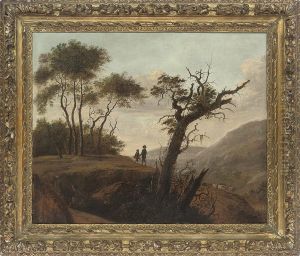Abraham Blommaert Paintings
Abraham Bloemaert was a Dutch painter and printmaker in etching and engraving. He was one of the 'Haarlem Mannerists' from about 1585, but he adopted the Caravaggisti style around 1620 when the influence of Caravaggio became prevalent.
Bloemaert was born in Gorinchem, in the Dutch Republic, in 1564. His father was an architect. Abraham was trained by his father as a young boy and later entered the workshop of the influential mannerist painter Gerrit Splinter in Amsterdam. He also studied with the painter Joos de Beer in Utrecht. Bloemaert’s early works were largely religious paintings that showed the influence of his mannerist training, which was characterized by highly stylized poses and often exaggerated forms.
In 1611, Bloemaert moved to Utrecht, where he became a founding member of the Utrecht Guild of St. Luke. In Utrecht, his style evolved as he shifted towards more naturalistic depictions, influenced in part by the work of Caravaggio, whose dramatic use of light and shadow was being embraced by a group of Utrecht painters known as the Utrecht Caravaggisti. Despite this influence, Bloemaert's work retained a certain decorativeness and fondness for intricate details and lush landscapes.
Throughout his career, Bloemaert was highly productive and versatile, working across various media and genres. He painted altarpieces, landscapes, genre scenes, and mythological and allegorical works. His prints and drawings were also widely disseminated, furthering his influence. Bloemaert was not only a significant painter but also a teacher; his studio was one of the largest in Utrecht, and he trained many young artists, including his four sons, who all became painters.
Bloemaert's long career spanned the turbulent transition from the Mannerist to the Baroque period in Dutch art, and his work reflects the stylistic changes of his time. He continued to paint until his death in Utrecht in 1651, leaving behind a body of work that significantly contributed to the development of Dutch Golden Age painting.








